In this chapter:
-From WANSTEAD to LEYTONSTONE -LEYTONSTONE Town centre -LEYTONSTONE to WALTHAMSTOW -Diversion to FOREST SCHOOL
LEYTONSTONE
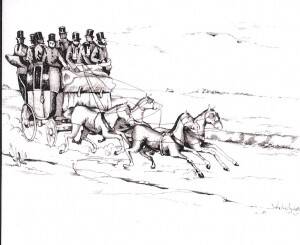
The ESSEX parishes of WALTHAMSTOW and LEYTON were largely rural in character: marshes, farms and forests dominated the landscape. In the 18th.c a place attractive for London’s merchants, bankers and businessmen, as they could get easy access to the CITY, thanks to FRANCIS WRAGG’s STAGE COACH service.
Still mid-19th c. the area provided a sylvan setting for the houses of the CHARRINGTONS, the BUXTONS, the BARCLAYS and the COTTONS. Houses with landscaped grounds and cultivated farmland, producing food, flowers and ornamental trees for the ever increasing London market.
A safe place. Safe?. This was a base for the era’s HIGHWAYMEN, the scourge of forest travellers.
LEYTONSTONE was a hamlet laying on the high ground in the East of the parish, belonging to the MANOR OF RUCKHOLT until the early 18th c.
The ownership passé to the TILNEY family, owners of WANSTEAD HOUSE (finally sold out and destroyed, to pay for the debts of LORD TILNEY, 1824).
When the railways reached the area, 1856,, the cheaper and speedier transport combined with the expansion of employment opportunities, led to the rapid urbanisation of the area: the wealthy families moved out and their estates were replaced by now familiar streets of VICTORIAN housing. The area had become a suburban dormitory for clerks and workmen mostly employed outside the area.
The 1960s council estates obliterated historical houses and entire areas.
On the map, the WALNUT TREE PH


Buses to/from LEYTONSTONE
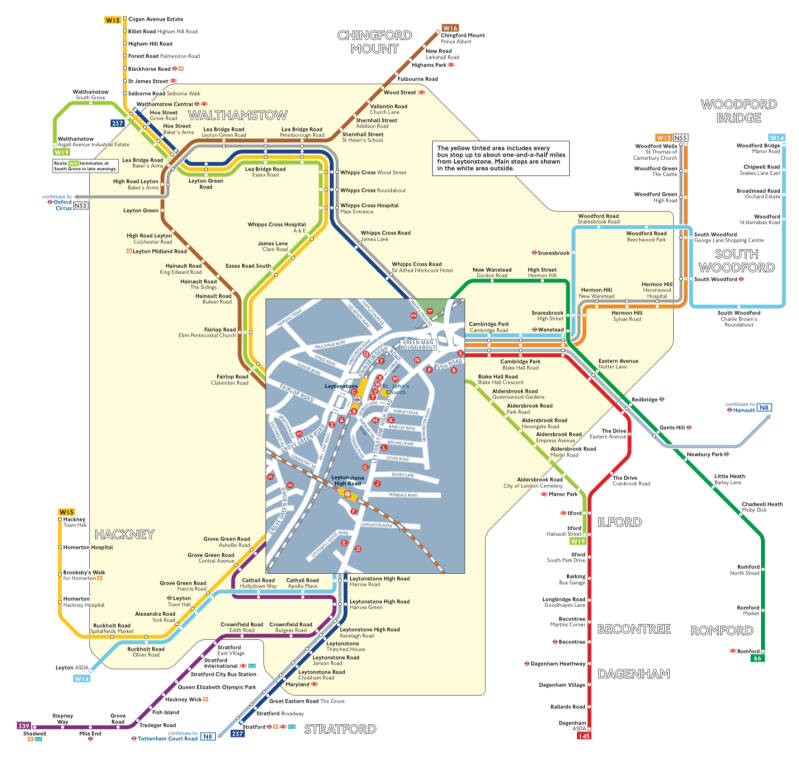

From WANSTEAD HIGH STREET to LEYTONSTONE
WEAVERS ALMSHOUSES

These Victorian Almshouses were completed in 1859 for the Worshipful Company of Weavers to replace ones in central London which had fallen into decay. A number of flats provide sheltered accommodation for the elderly in a safe environment with resident staff. The architect was Joseph Jennings (1806-89) who was the architect and surveyor for the company and the building is listed by Historic England as Grade II.
LEYTON ATTE STONE: HERE YOU HAVE THE STONE!
There has been a milestone here since at least the early 18th century when the Middlesex and Essex Turnpike Trust was formed in 1722 and is shown on a turnpike map of 1728. It marks the junction of two main roads leading from London into Essex, at what is today the junction of New Wanstead and Hollybush Hill. However, some form of milestone has likely been here for much longer. It is listed by Historic England as Grade 2.
FOREST LEA
Two inter-war modernist apartment blocks in Holly Road, near Whipps Cross Roundabout. Originally part of Leytonstone but now within Redbridge. Not listed by Historic England or Redbridge.
GRIDS on MOTORWAYS
On the slip road leading from the Green Man Roundabout onto the A12. Since 1630, the tenants of the manors of Wanstead, Aldersbrook, Leyton and Ruckholt had the right to pasture their horses and cattle in the open places in the forest. This continued after the areas became suburbs of London. Until the outbreak of foot and mouth disease in the late 1990s, cattle were often responsible for delaying traffic on the Green Man Roundabout and the surrounding roads. When the new road was put in (c. 1993) it was necessary to install a grid to stop them wandering onto the busy two lane road. Planners must have thought that the cattle would observe the rules of the road, as they did not bother to install a grid on the slip road leading off the A12. The lower photo taken in 1991 shows cattle drinking from the pond on Wanstead Flats called Alexandra Lake.
HIGH ROAD
Part of the highway from EAST ANGLIA, ESSEX, and through EPPING to LONDON, carrying long distance coaches as well as market carts and wagons.
The road left the forest at the GREEN MAN
THE GREEN MAN PH. A highwayman’s residence?
1927. A GREEN MAN COACHING INN has existed at this junction since at least 1668. The original one sat nearer the BROWNING ROAD junction.
DDEFOE described it as a well established…
A known refuge of DICK TURPIN who, it is well known, stole the race horse (plus some gold and silver, a knife and a horsewhip) from JOSEPH MAJOR, only a few yards from the inns, in 1737.
Landlord RICHARD BAYS endeavoured to find the horse, and he did: at the RED LION, in WHITECHAPEL!. According to legend, DT tried to get vengeance breaking into the inn, in August 1737. But he was in YORKSHIRE.
One more legend?: DT had a room in the inn, fitted out with a large chest, which had a false bottom, a trap door leading to an scape route!.
22 August 1722. CHRISTOPHER LAYER, of HOLBORN, with STEPHEN LYNCH, servant and friend, we’re on their way to meet LORD NORTH and LORD GREY at EPPING. While stopping off at night here they were arrested accused of plotting to kill KING GI. LAYER was a lawyer, a committed JACOBITE, who had been to Rome to see the OLD PRETENDER. Found guilty, he was h d and q at TYBURN, and his head remained at TEMPKE BAR for 30 y.
By 1783 this was the most impressive licensed house along the road (CAMBRIDGE, HAYMARKED) valued for rates at a considerable greater sums than other inns on the route.
By 1902 haycarters stopped here refreshment. The magistrates received complaints about those objectionable crowds, given that this was an intersection of roads and a tramway terminus, and the haycarters were discouraged from stopping here.
The GREEN MAN is a character belonging to an ancient mythology, appearing in ROMAN times as a figure half human, half vegetable… Later, in Britain, a pagan deity representing the spirits of trees and linked with the FESTIVAL OF BETTANE, on MAY 1st, marking the coming of SPRING and trees turning green. At one time called GREEN GEORGE or JACK-IN-THE-GREEN. The medieval church assimilated it somehow and could be found in churches
No.742 HIGH ROAD. Birthplace, 1837, of SIR MORRELL MACKENZIE
Much altered Georgian house.
Eminent Victorian throat specialist who, notwithstanding his great reputation, attended (in London, but unsuccessfully) the German Emperor FREDERICK III in his last illness (German doctors might be influenced by political considerations and consequences -I.e. incapacitation of the monarch)
He was against extirpating the larynx, as the disease was not demonstrably cancerous (German doctors disagreed). According to Mackenzie, when FREDERICK died, the cancer became malignant due to the irritating effects of the treatment, in Germany.
1865. He founded the world’s first EAR, NOSE AND THROAT , hospital, in GOLDEN SQUARE, SOHO. He worked at the ROYAL LONDON.
His works and writings paved the way for modern diagnosis and treatment of the diseases of the larynx (LARYNGOLOGY).
After the emperors death is life and career became uneventful.
Nos.694-698
LEYTONSTONE HOUSE
Built about 1800, at the edge of the EPPING FOREST,
This was the home of Sir Edward North Buxton (1812-1858) one of a philanthropic family of brewers (TRUMAN, HANBURY & BUXTON, the BLACK EAGLE BREWERY, SPITALFIELDS).
His father Thomas Fowell Buxton (1786-1845) had helped both Elizabeth Fry in her work for prison reform and William Wilberforce in his fight to end slavery.
Edward was member of Parliament for South Essex and married Elizabeth the daughter of Elizabeth Fry. Two of their sons, Thomas and Edward played a large part in the introduction of the Epping Forest Act of 1878, which protected the forest itself from encroachment and also the rights of the commoners to use it.
The BUXTONS

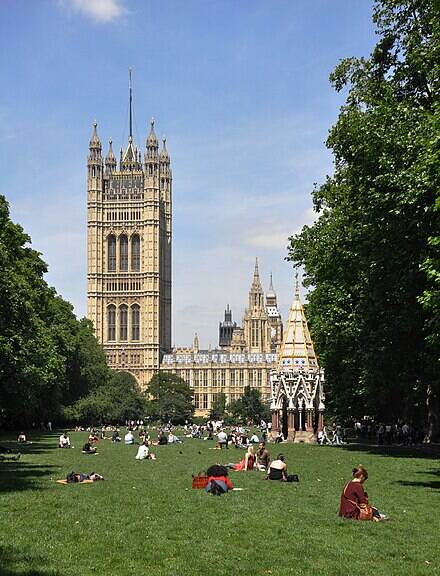
Sir TFB first Baronet (1786|1845]. Father died young, mother ANNA HANBURY, a QUAKER, and through her influence he became associated with the GURNEYS. Especially associated with JJ. GURNEY, banker and Evangelist minister, and his sisters ELIZABETH (FRY) and HANNAH, whom he married, 1807. 5 of their children died in infancy due to whooping cough and consumption.
In 1808, he was appointed director of the BLACK EAGLE (T,H & CO), and partner I. 1811 (T,H and B & CO).Later, he would be one the sole owner
He was a member of CofE, but attended QUAKER meetings, and became involved in SOCIAL REFORM (raising money for the SPITALFIELDS weavers funding ELIZ.FRY’s prison reform, joining her Association for Improving the feminine prisoners of NEWGATE. As MP he was involved in improving prison conditions and criminal law, pushing for abolition of capital punishment, working for restricting the number of crimes for which cap.pun. was applied (from 200 to 8), He argued for the suppression of lotteries, and campaigned for the abolition of the Indian practice of burning widows.
ABOVE ALL, ABOLITION OF SLAVERY, helped by sister in law LOUISA G.HOARE, from HAMPSTEAD.
SLAVE TRADE was abolished on 1807.
He funde. The BR.& FOR ANTI-SLAVERY SOC.He introduced a resolution in Ethel COMMONS condemning it as repugnant for the Brit. Const. and to Christianity, calling for abolition, He pressured the govern to improve the treatment of slaves in the colonies. In 1825 he took over as leader of the ABOLITIONIST MOVEMENT after WILLIAM WILBERFORCE retired.
In 1833 he presented to Parliament a PETITION with 187.000 signatures, collected by PRISCILLA BUXTON and AMELIA OPIE.
Finally in 1833 SLAVERY ABOLITION ACT passed (WILBERFORCE had died already, but knowing that the passage of the law was assured).
1839. Urged the govt to sign treaties with African leaders to abolish trade, even promoting a NIGER expedition. In 1841 to work on it.
DAVID .IVINGSTON was influenced by TFB, becoming a missionary and fighting for abolition and for promoting a legitimate trade (in goods) to desplace slave trade.
1824. He was part of the creation of the SOC for the PREV of CRUELTY AGINST ANIMALS, in THE OLD SLAUGHTER HOUSE, ST.MARTIN’S LANE
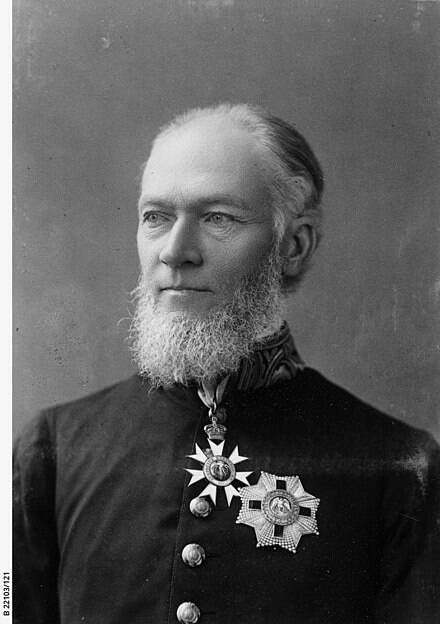
Sir ENB, second Baronet (1812-58) married cousin CATHERINE GURNEY, from the GURNEYS of EARLHAM HALL, NORFOLK. She was the second daughter of SAMUEL GURNEY of HAM HOUSE, WEST HAM (and both had 12 children).
SIR FOWELL BUXTON, third Baronet (1837 -1916), was only 21 when he succeeded his father and became the head of the family, assuming grea5 social and business interests.
Althougha LOW CHURCHMAN he had been imbibed by the GURNEYS concern for good works. He married LADY VICTORIANOEL, daughter of the 1st EARL OF GAINSBOROUGH, and made his home at WARLIES, near EPPING.
His 9 children were al drawn to his schemes for social improvements, particularly in safeguarding open spaces against the encroachment of London. “A man can do an immense amount of good if he doesn’t care whomge5s the credit”, and “when in doubt do the enterprising thing” were 2 of his mottoes.
He was Chairman of EPPING BEACH, Verger of EPPING FOREST, MP for MING’S LYNN, Governor of Australia.
when CATHERINE GURNEY, TFB mother, died, at 97 years of age, most of her127 descendants were involved in social work.
TFB and his brother ENB(Liberal MP for WALTHAMSTOW) played a dominant part in fighting the course of the commoners of EPPING FOREST, with the back of the CITY OF LONDON CORPORATION, leading to the 1878 ACT.
ENB, 3rd son of the 2nd Baronet was VERDERERS of EPPING FOREST for 4 years, establishing a new system of management, contributing to its conservation. He wrote a small guide about EF, and was a founding members of FAUNA AND FAUNA INTERNATIONAL.
In 1924, from his deathbed, he bought HATFIELD FOREST and presented it to the NATIONAL TRUST.
Son, GS, GGS succeeded him
When, in 1868, the BUXTONS left the BETHNAL GREEN INDUSTRIAL SCHOOLS were established here, run by the Bethnal Green Board of Guardians. The Bethnal Green Schools for the Juvenile Poor:children between the ages of 3 and 14 years who had been orphaned or deserted, or whose parents were ill or in prison, were sent to the Schools. Temporary iron buildings initially housed some 370 children, but permanent brick semi-detached 'cottage homes' gradually replaced the temporary structures.
In 1930 control of the Schools, now known as Leytonstone Children's Home, passed to the LCC. Children over 5 years of age attended the local community schools.until 1937. At the rear, surviving “homes” or “houses” (dormitories of the boys)
Then, it became a hospital, the LEYTONSTONE HOUSE.
In 1991 Tesco acquired the site containing Leytonstone House and the school buildings in order to build a major store.
Most of the site is now a Tesco superstore, but also contains a health centre and a small mixture of retail outlets, offices and homes (housing association flats).
The former SCHOOL HALLis now the pharmacy dept. of TESCO
No.883. Site of WILDSMITH UNDERTAKERS

Late 17th c. building, dated from roof joints. Originally thatched. In 1953 WILDSMITH &AUBIN FUNERAL DIR. The W. were a family of local carpenters since, at least, c.1812. They helped make the CAGE (FRED WILDSMITH was the first landlord of the NORTH STAR)
Former offices of SHIP CREW UNION
Modernist building,with a slightly nautical design.
Site of SYCAMORE HOUSE. THE WELSH MOREIA CHURCH
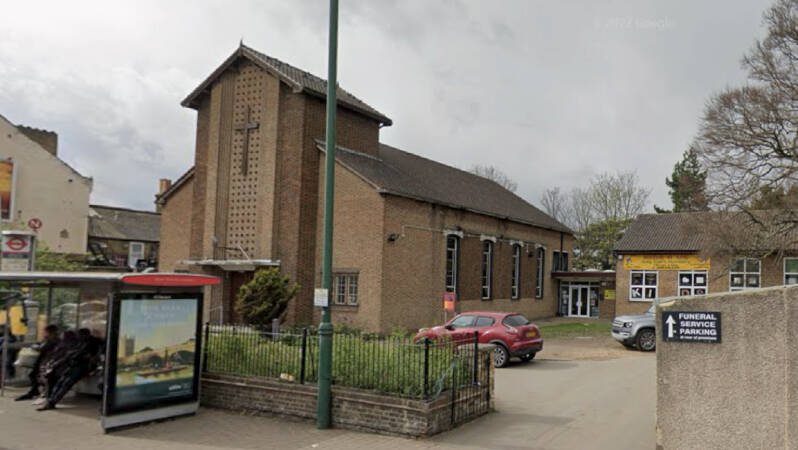

Now, a CALVINISTIC METHODIST.
1958.Arch. T and H LEWELYN DANIEL, in a contemporary style.
Foundedfor WELSH speakers throughout metropolitan ESSEX.
Originally, here, SYCAMORE HOUSE, LORD LISTER’s property.
Here, was born (a died) GUGLIELMA LISTER (1860-1949), the niece of LORD LISTER, and granddaughter of JJ LISTER.
She was an International authority in MYCETOZOE (MICOLOGY, fungi), member of the British Mycol. Soc, a the Linnaean Soc. She wrote “FLORA OF WANSTEAD PARK DISTRICT”.
Her ashes were scattered in the BURIAL GROUND of the QUAKER MEETING HOUSE.

JOSEPH LISTER, born in UPTON, WEST HAM, son of JJ LISTER, pioneer in achromatic object lenses for use in microscopes. His research in bacteriology and infection in wounds raised his operative technique to a new place revolutionising surgery. He promoted sterile surgery while working at GLASGOW ROYAL INFIRMARY, using carbolic acid (phenol) to sterilise surgical instruments and clean wounds.

East of the HIGH ROAD,
BROWNING ROAD CONSERVATION AREA
BROWNING ROAD, a little short terrace of cottages, with the characteristic clay tile roofs, and the original Georgian sash windows… Low ceilings and door heights. 4 1/2”thick party walls. Most basic internal space standards… that is, the most modest domestic buildings of the period, very small in scale, picturesque, contrasting with later developments.
The truth is that the gentlemen families who lived in the are around 1770 employed many servants and small tradesmen, so this area was build to accommodate that numerous workforce, so that LORD WELLESLEY, owner of the WANSTEAD and LEYSPRING ESTATES, erected the cottages
In fact, it became BROWNING ROAD in 1900, one assumes that in homage of the poet ROBERT BROWNING (1812-89), we’ll know. For having eloped with ELIZABETH BARRETT on defiance of her father ban on her marriage.
Before: GREEN MAN LANE,BACK LANE, PARK LANE (it used to lead to WANSTEAD PARK).
LEYTON BOROUGH COUNCIL had plans to build here modern housing. The decision was put on hold. But, meanwhile, the borough ceased to exist in 1965, and the future of the area was reconsidered.
While, individually, none of the buildings in the street were of sufficient quality to merit listing, the area as a whole was considered historically and architecturally interesting, as it was in a district dominated by very different patterns of development: scale, style, informal layout… all typical of country buildings of a precious age, made advisable to protect it as a CA (fir’s introduced by the 1967 CIVIC AMENITIES ACT). Here, the designation was made in 1973.
Six terraces of cottages, a PH, a converted warehouse.
Simple w up w down vernacular buildings that were let on a yearly or similar tenancies and were not copyhold.For that reason they do not appear in the MANOR COURT records and the exact date of construction is therefore uncertain, although the 1840s seems more likely.
Brick, Welsh slate, clay tiles and pantiles.
Chimney stacks and pots.
Early cast iron street sign (around 1900]
To the N
Site of THE CRIB
At the rear of the GREEN MAN (now FOSTEST VIEW) was the site of an unsavoury group of hovels
To the E of the area
Site of GREEN MAN POND, now HENRY REYNOLDS GARDENS
A former gravel pit, the pond was drained in the 1970s
Site of BUSHWOOD HOUSE
It is named after the ancient woodland of Bush Wood,
“BUSHOWOOD” road?
Residence JM KNIGHT Surveyor of MILE END BOARD
Gives name to the area South of the CA, W of the High Road
Site of IVY BANK or HUTCHINSON’S HOUSE
GEORGE ANDREW HUTCHINSON was a prominent Non-Conformist (d.1913). Editor of the BOYS OWN PAPER, established by the RELIGIOUS TRACT SOCIETY to provide exciting stories, not penny dreadful style.
THE NORTH STAR PH.
In the midst of the cottages this establishment makes an interesting tale, narrated by the nieces of LORD LISTER of SYCAMORE HOUSE: uncle FRED WILDSMITH brought back a monkey from a sailing voyage (his only one, he was 23) on the 2 masted BRIGANTINE (sailing vessel) NORTH STAR, under CAPTAIN NUNN. He obtained a lease to set up business from the CHARRINGTONS of LEYSPRING HOUSE, FOR throwing 2 cottages into one and converting the whole into a beer house
Frederick WILDSMITH was the son of FREDERIC WILLIAM WILDSMITH carpenter/builder, based at 5 HIGH ROAD; he tended for the WEST HAM UNION WORKHOUSE, in 1843. In 1873 he was elected to the local board.
VICTORIA/EDWARDIAN STREETS towards WANSTEAD FLATS
Tree lined rows of characterful houses, with decorative keystones above entrances: face of bearded man (long heavy beard!), water related (POSEIDON, FATHER THAMES) or is it the GREEN MAN, or a king?. Typical of Victorian Romanticism revival.
No.720 FORMER FISH PAWNBROKERS
Nos 694A-698A HIGH ROAD
Georgian houses behind shops, occupying the site of the front gardens. The extensive grounds behind have been largely built up
Wealthy families lived here attracted by the forest side setting and easy access to to London
No.698-700
Dutch style gable with hoist
Site of CARLTON HOUSE?
Site of the Conservative club?
Site of BENJAMIN COTTON HOUSE. THE SALISBURY CLUB
He was the brother of WILLIAM COTTON, of WOOLWOOD HOUSE. He moved from LEYTON’s WALNUT TREE HOUSE
Notice the Dutch style gable with hoist above numbers 698 and 700.
Opposite on the lefthand side the Remar UK charity shop, numbers 845-847 High Road, used to be shoe retailers Russell & Bromley. Note under the ugly facia the quality design of original shop windows and entrance.
708 High Road on the corner of Grove Road was in 1956
W Hinds, jeweller.
THE WALNUT TREE PH. Site of the COTTON family residence
The Cotton family came from Northamptonshire and moved to London sometime in the 17th century.
DR.NATHANIEL COTTON was born in London in 1705. He was well known in his time as both a physician and poet, and became a specialist in mental illness. He kept a private asylum where the poet William Cowper was confined during his bouts of lunacy.
His fourth son was JOSEPH COTTON, who joined the Royal Navy in 1760, and later the Maritime Service of the East India Company. Joseph made five voyages to India, acquiring a fortune sufficient to retire on. He settled in Leyton, at Walnut Tree House, around 1782 and lived here for the rest of his life (he died in 1825). Captain Cotton became Deputy Master of TRINITY HOUSE in 1803, in which year the threat of an invasion by Napoleon lead to Trinity House forming a volunteer corps. William Pitt was the Colonel, and Captain Cotton held the rank of Lieutenant-Colonel. They manned ten frigates stationed in the Thames estuary.
Captain Cotton’s third son was WILLIAM COTTON, who was born at Leyton in 1786. In 1821 William was elected a director of the Bank of England. By the time of his death in 1866 he had been its governor and for many years ‘father of the Bank’. He invented an automatic weighing machine for sovereigns which remained in use until the end of the century. It could detect underweight coins to the ten thousandth part of a grain.
However, he was better known for his charitable work. Among many other projects, he was one of the two founders of the system of public baths and helped establish model lodging houses.
WALNUT TREE was later renamed LEYTON House. The site of this pub was part of its estate, until around 1870 when three houses were built here, one of which retained the name Walnut Tree House.
We’re the COTTON, originally, the Huguenot COTIGNIE family?
Nos. 845-847 FORMER RUSSEL & BROMLEY
Original entrance and windows (quality design)
BUSHWOOD ÁREA
Aylmer Road
“LEAF MEMORY” artwork
By STEPHEN DUNCAN
The sculptor's ideas for a series of sculptures known as 'The Arcadia Series', including this piece, began whilst he was at the British School in Rome. The large Acanthus leaves that grow in the city and are represented in much of its architecture, were cast by the sculptor and are incorporated in the design.
FORMER THE CROWN PH. Now THE BIRDS
There are references to it in the 17th century but perhaps it was not then on this exact site. Deeds from the 1st half of 19th C survive. It had stabling in 1839. The present building dates from 1888 and soon after if not before the pub was owned by the large BARCLAY PERKINS brewery. A 'Jug and Bottle Department' (takeaway) was added in 1909 (down the Aylmer Road side). By 1938 the Crown was owned by CHARRINGTONS brewery. In the 1940s the upstairs billiard room was given a separate entrance and converted into premises for the MINISTRY of Labour and National Service, but handed back to the pub in the 1950s. The City and East London Branch of the Campaign for Real Ale refers in its 1986 Guide to an "Outstanding ceiling of 'LINCUSTRA' imprinted with entwined strange mythological creatures once picked out with gold leaf, also good robust original bar back etc"


PRINCE ALBERT PH., MAIDA VALE
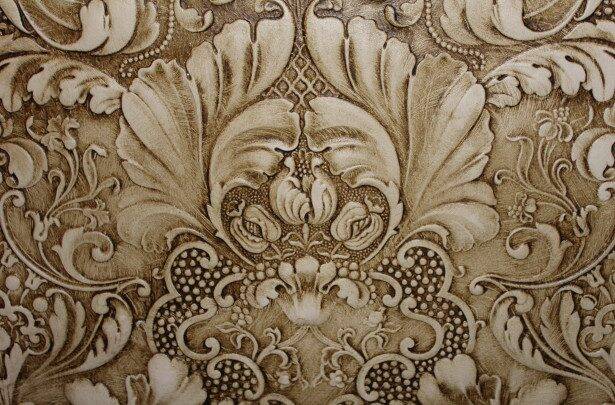
No.708 FORMER W.HINDS JEWELLER
A family of jewellers and watchmakers from STAMFORD, LINCLONSHIRE. They were in charge of cleaning the county churches clocks.
GEORGE HINDS moved to London establishing shops in HARROW ROAD and then EDGWARE ROAD.
Numbers 676/678
Built as showrooms for gas-fuelled heating and cooking equipment, for some years was Marc Jason's Shoeworld, now it is a medical clinic.
The building was designed by George Grey Wornum (1888 - 1957), the architect of the headquarters of the Royal Institute of British Architects at 66 Portland Place, W1. The granite stonework panels on the façade survive as do the black stone rim containing the glazing, the fixing holes for the flood lights that ran along the stone panels above the shop windows, and the Crittall windows above ground level. Above the suspended ceiling original Grey Wornum plasterwork appears to have survived, as does the lecture theatre at the rear, together with some original joinery and Ironmongery.
SITE OF THE OLD VICARAGE. SITE OF BEARMANS
Matalans has been filling. the block up from St John's Church.
Bearmans department store (“The store with the personal touch”, op. in 1898, by FRANK BEARMAN, a 27 years old ,draper had one of its two sites here. It was a family run business, until 1962.it was sold to the CO-OP.
BEARMAN had purchased by 1906 a nearby furniture store. In 1910 he opened an arcade, trying to match department stores of Central London.
Between 1908 and 1921 he was joint manager of ALDERS (SOUTH LONDON).
In 1957 the first escalators outside Central London were installed in the KIRKDALE ROAD extension.
SITE OF DAIRY

Between numbers 682 and 684 there is a gateway that once led to the premises of the Essex Dairy Farm Company which had cows grazing in Ongar.
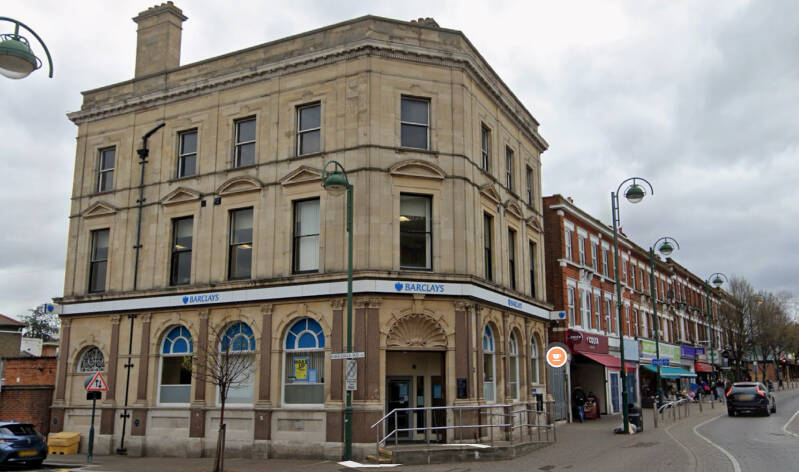
Beyond is Barclays Bank. A bank is shown here on the1915 Ordnance Survey map.
PUBLIC LIBRARY
Designed in 1934 by James Ambrose Dartnall (who died in 1985 and was of a local family). There were municipal electricity showrooms on the ground floor. The building has a Classical exterior and an Art Deco interior, well preserved
ST.JOHNS
Built 1832-3 to the design of Edward Blore of Suffolk white bricks in the Early English style. William Cotton paid for its construction. A later expanding population needed a larger church and a south aisle was added to the design of Caroe, somewhat Arts & Crafts. The churchyard railings are a rare survival and were copied for St John's Stratford. The church is listed Grade Il including its gates, gatepiers and railings
FORMER WOOLWORTH
Former Woolworths store, now Argos, is typical but a good quality building
FORMER HALES STORES
A 1906 postcard view of the junction of Church Lane and High Road shows 'The Stores' which in 1936 had become
'Hales Stores. A Hales Stores painted sign pointing down to the entrance survives on the wall facing up the High Road. The shops are now Santander Bank, number 660 and Bairstow Eves.
HITCHCOK’S MOSAICS. LEYTONSTONE LU STATION
Alfred Hitchcock was born at 517 High Road, Leytonstone, in the east of London on 13th August 1899. To mark 100 years since this event, and to commemorate the director's link with the area, 17 mosaics have been installed in the entrance corridors of Leytonstone tube station. They were made in vitreous glass tesserae, using the reverse method, by Greenwich Mural Workshop. The work required some 80,000 tiles, took seven months to complete, and the final installation took place during April 2001. Amongst the scenes from films, there are also images of Leytonstone, portraits of Hitchcock and even trademark cameo roles. Leytonstone is on the Central underground line, five stops east of Liverpool Street - go see them if you can!
Text with acknowledgements to an article by Lubna Ul-Hasan in "Grout", the newsletter of the British Association for Modern Mosaics, February 2002.

From LEYTONSTONE to WALTHAMSTOW



WHIPPS CROSS ROAD/FOREST GLADE CONSERVATION AREA
THE WALLWOOD ESTATE was sold for development in 1874 (the wealthy families like the COTTONS were moving out), and plans were laid before the local board in 1883. Building was delayed until the 1890s, due to disputes with the FILLEBROOK ESTATE, along what is now COLWORTH ROAD. By the end of the century, much of the current housing and street layout was complete.

Alongside POPPLETON ROAD
ST.ANDREW’S CHURCH
One of 4 sister churches to ST.JOHN THE BAPTIST established in the late 19th c. to meet the increased demand for church accommodations.The first church though was established in the corner of COLWORTHROAD and FOREST GLADE, in a corrugated iron building.
Although the site on which St. Andrew’s is built was given to the Church in 1875, it was some 10 years before any kind of building was erected. And it was build in stages, due to lack of funds and the need for fundraising, as te the costs were high due to the quality of the materials (I.e the elaborate CHANCEL, MEMORIAL to WILLIAM COTTON).
The arch. was ARTHUR BLUMFIELD. In an early English style, Kentish rag stone, knapped flints.
Most of the parish stands within the former medieval estate of WALLWOOD, which was purchased in 1817 by William COTTON. A highly successful businessman and governor of the Bank of England, he donated the land.
In its Edwardian heydays, had the best attendance in the area (1.500 people, on Sunday). City workers now were living in the area.
Classes for children and adults, gym, tennis, cricket, regular entertainment… were organasided in the “iron building”, former church
No pew rents paid, it had no endowment, and, unusually, no vicarage or died.
1913. Choir and clergy vestry added.
The church thrived until the early 30s. Finances became an issue. After the WR it started the discussion about a possible closure. A formal decision was taken in 1967, but a new curate, REV.GRAHAM LAUT, was convinced that the church had a future… The hall was sold and redeveloped in an imaginative and sympathetic way. Parts of the church were converted
From then ST.ANDREW’S has moved from strength to strength…
CHURCH ROOMS
After further fundraising (and replacing an earlier Sunday school building) in 1904 the hall was open, and enlarged on 1912. A simple red brick and stone building, designed by HENRY SMART, in an ARTS & CRAFTS STYLE. It features decorative stained glass in ART NOUVEAU, in the eyebrow dormers and in the large mullioned windows above the ornate main entrance.
LEYTONSTONE SCHOOL
On he site of FOREST FARM, originally LEYTON COUNTY HIGH SCHOOLFOR GIRLS, a grammar school opened in 1911.
Red brick and stone, ARTS AND CRAFTS, Elizabethan (domestic) style, by arch.of LEYTON DISTR.COUN. W.JACQUES ARIBA (also CARNEGIE LIBRARY, LEA BRIDGE ROAD). It has a fine panelled hall with a hammerbeam roof.
In 1968 became LEY. SEN. HIGH SCH, a girls comprehensive. In the 80s a mixed comprehensive. From 2007 a business and enterprise specialised status. In 2008 “leadership partners” status. Designed hig performance.
DAME SHARON WHITE (Treasury,OFCOM, JOHN LEWIS) was a pupil.

Alongside WHIPPS CROSS RD.
ASSEMBLY ROW
In the 18th c. the scenic attractiveness of the FOREST led to a building frenzy, in this part of the LEYTON parish still rural.
Originally a row of 12 (now only 6 remaining) middle-class houses were b. in 1767, in the restrained style of the period, typified by rubbed brick riches and elevation devoid of decoration, excep5vthe timber door case with a classical pediment. It contrasts with the abundance of stucco decorations applied the later developments.
SITE OF ASSEMBLY ROOMS, now a VICTORIAN TERRACE
Now an imposing terrace, of 5 storey houses overlooking EPPING FOREST.
It is said that London merchants met in the aftermath of the GF 1666.
It acted as a venue for social gatherings and public meetings.
Is it ? the ASSEMBLY HOUSE (which appears as a SCHOOL in a 1777 map, and is mentioned in 1798 and in directories 1839-63, mentioning the MORRISES (WILLIAM and GEORGIANA) as managers, and misses MEDLICOTT and MORRIS.
THE ALFRED HITCHOCK HOTEL
Originally 2 pairs of Victorian Villas, combined on the porches, original cast iron work. Internally lit5le has survives.
SURVIVING GEORGIAN HOUSE
FORMER CHURCH OF THE CHRISTIAN SCIENTISTS, NOW the SHRI NATHJ SANATAHAN MANDUR, an HINDU TEMPLE
1937. Simple, Neo-Georgian. TE DAVIDSON & SONS and SHERWOOD.
The Christian Scientists celebrated their first services in 1906, in the 18th c. property that used to stand on the site.
The name of this MANDIR (est. 1980) translates as all inclusive, oecumenical, nom sectarian. They follow SANATAN DHARMA, and have a sister temple WEMBLEY.
LEYTON FLATS. THE HOLLOW PONDS and the SITE OF THE LIDO
The ponds originated as sand and gravel pits for resurfacing the highway in the 18/19th cs, and, after the 1878 EPPING FOREST ACT they were enlarged for recreational uses as fishing, boating and bathing.
In 1903 a swimming pool was excavated by manual labour as part of an unemployment relief scheme. It was to the N of the POND (HOLLOW FOREST?), close to the junction between LEA BRIDGE ROAD and SNARESBROOK ROAD, and called THE BATHO.
It became muddy and unhygienic the Borough Councils (Leyton and Walthamstow) jointly agreed to fund its improvement: in 1932 the LM of LONDON opened the NEW LIDO, a pool of up to 100 yards (one straight section) with paved surrounds, and changing rooms. It was fed by underground springs. After a few months, though, it closed, after a water sample had shown it unfit for bathing.
The floor of the pool was sealed and a chlorination plant installed, reopening in 1937. A diving pool was added.
By the ‘80s attendances had fallen, being final closed in 1982. The site was levelled and returned to forest land.
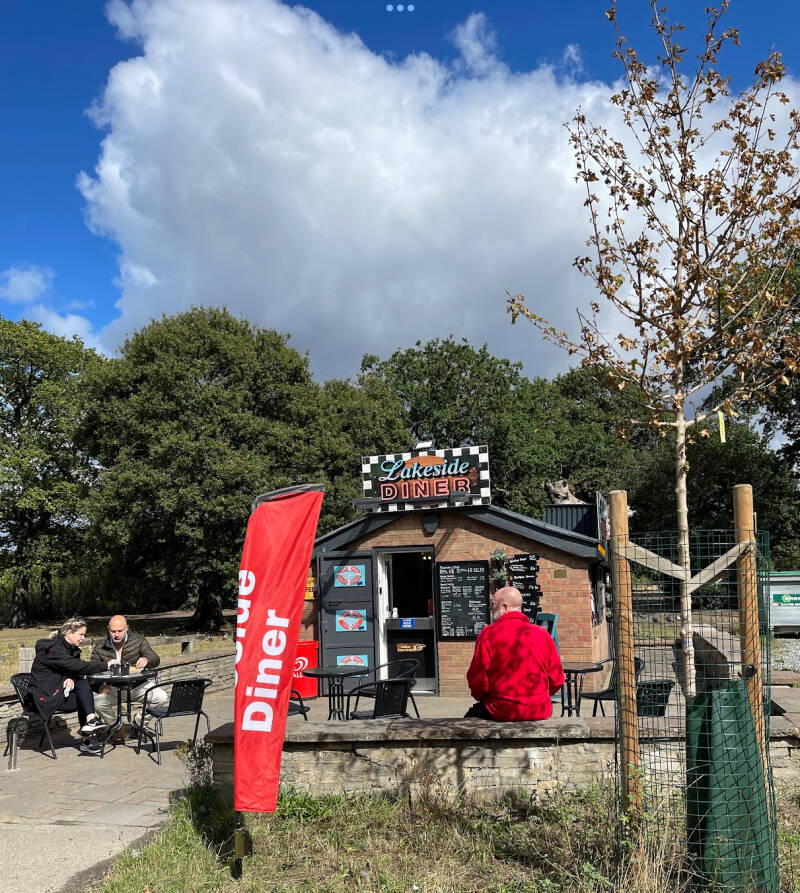
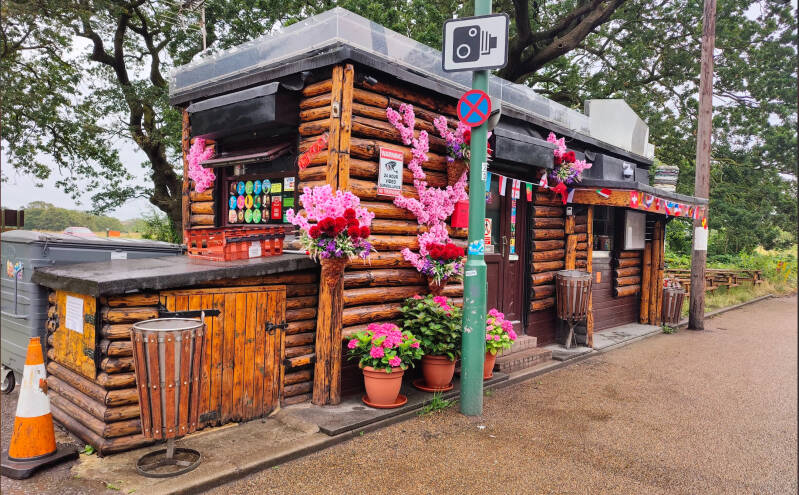
Cafés.
Left into Forest Glade
VICTORIAN HOUSE
A substantial late Victorian one.Door and surround richly ornamented. Stucco decoration.
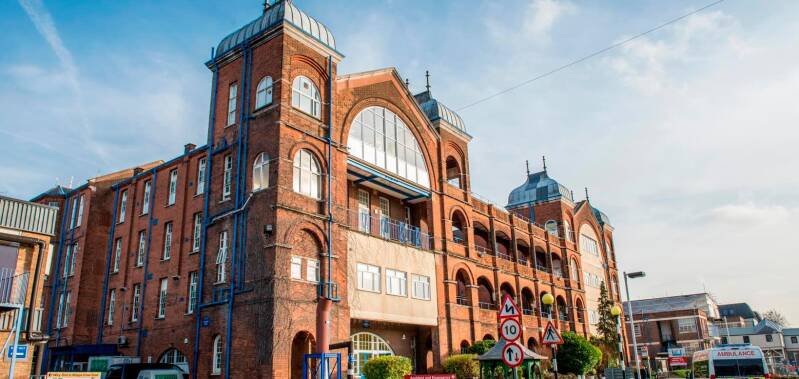
In 1889 the West Ham GUARDIANS bought the FOREST HOUSE ESTATE and HOUSE (44 acres of grounds), from the BOSANQUETS as a site for a future INFIRMARY, for which planning approval was granted in 1894. The old mansion house was then used from that year as an annexe to the West Ham Union workhouse in Leyton to accommodate elderly infirm men. It was demolished in 1964. One of the fire places was salvaged and incorporated into the foyer.
The original infirmary buildings (1903) were designed on pavilion lines by FRANCIS STURDY. 4 awe inspiring symmetric blocks, with tiered covered walkways. 2 massive towers, which together with the pepper pot roof are now recognised local landmarks. It housed 672 beds in 24 wards. £250.000.
During WW1 the king visited (tablet) as sounded troops were treated here.
Whipps Cross Hospital was formally founded in 1917, and by the end of the War became a general hospital. Management passed to the COUNTY BOROUGH OF WEST HAM.
In 1946 an extension was opened and became part of the NHS in ‘48.
The former main entrance building, in the form of a Northern Renaissance Town hall (incorporating a Perpendicular Style CHAPEL with a double hammerbean roof) is now concealed by the characterless A&E Dept, a state-of-the-art one, opened in 2012, one of the largest and busiest A&E departments in the UK.
It has over 700 beds and has It is part of Barts Health NHS Trust.
It is a teaching hospital for medical students from BARTS AND THE LONDON SCHOOL OF MEDICINE AND DENTISTRY.
It has its own radio station.
It had one of the worst rates of MRSA, in 2008, but in 2010 it had the lowest rate.
The hospital serves a diverse community from Chigwell to Leyton, with notable celebrities David Beckham, Jonathan Ross, David Bailey (fashion photographer ), Graham Gooch (cricketer), Steve Harris (IRON MAIDEN) Harry Kane, and Richard Ayoade both born in the hospital.
LANTERN FOREST
FOREST HOUSE
Originally land belonging to STRATFORD LANGTHORN ABBEY. The house was built in 1568, rebuilt before 1625. Acquired by marriage by the EARL OF NORWICH, GEORGE GORING. His son (buried in ST.MARY’s LEYTON) enlarged it.
Purchased successively by HENRY CAPELL (KEW GARDENS), JAMES HUBLON (BANK OF ENGLAND), LM SIR GILBERT HEATHCOTE (the last to ride on horseback on LORD MAYOR’S SHOW), and the BOSANQUET FAMILY (controversy with RICARDO)
WHIPPS CROSS?
In fact the name specifically applies to the junction of LEA BRIDGE and WHIPPS ROADS and WOOD ST., the highest point in the area. (207 ft., 63 m.), and boundary between LEYTON and WALTHSMSTOW.
JOHN PHYPPE set up a wayside cross somewhere on this site. In the ESSEX dialect “F” sounded as “W”, hence the name PHIP’S, or PHYPPYS, or FYPP’S, or PHIPPES… ended being WHIPPS.
No, this was not the place where those found guilty of breaking the forest laws were whipped!….

To WALTHAMSTOW along WOOD STREET
No.245.SITE OF BROADWEST FILM STUDIOS
No.280. SITE OF PRECISION FILM STUDIOS
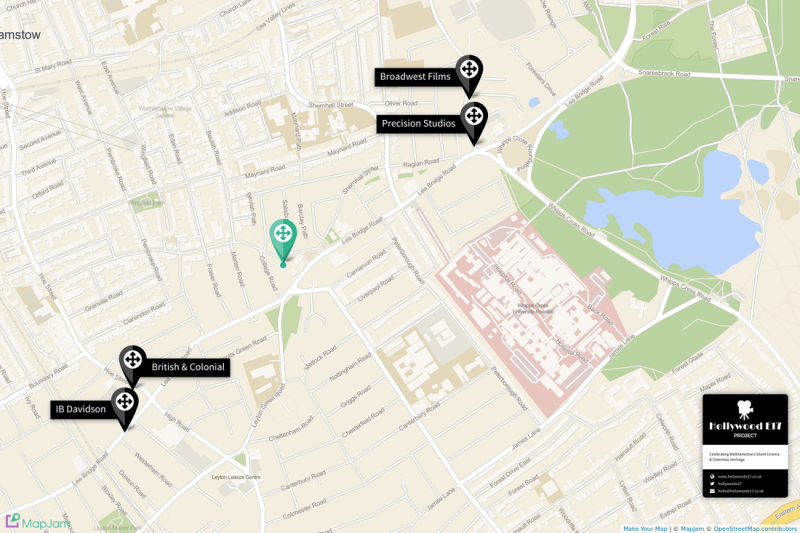
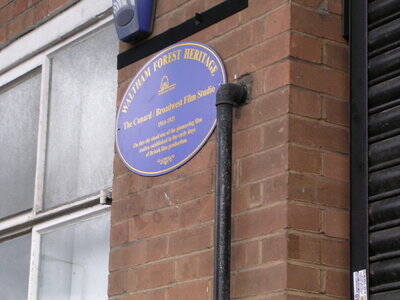
CLOCK HUSE
Now a block of flats and it has been much altered and added to since it was first built in about 1706. In 1713, the house was bought by a Dutch merchant called Jacob Jacobson who was later given a knighthood. Jacobson was a director of the infamous South Sea Co. In 1711, the company had been given the monopoly of trade to South America and had floated shares which became popular. As prices rose for shares, many made handsome profits when they sold. This encouraged a mad rush to invest in shares in the hope of getting rich quick and shares prices became vastly overvalued. In 1720, following a war with Spain, the bubble burst and share prices crashed. Many people were ruined. The directors of the company, foreseeing the impending crash, sold their shares at the top rate. The directors were arrested, and Clock House was sequestered to help refund shareholders; but Jacobson later bought it back.
GREENWICH MERIDIAN
Set into the pavement in front of 111-113 Wood Street is a marker to show the position of the Greenwich meridian. A similar one can be found on Forest Road pavement just south-west of the railway bridge near the junction with Hale End Road.
THE PIG AND WHISTLE PH.
This is part of Station Parade and the station opened in 1873. Despite the illustration on the pub sign, the name is a corruption of the term A PEG OF WASSAIL meaning a quantity of drink. In olden times, drink was often stored in flexible leather bottles. The liquid in these bottles was subdivided by PEGS which pinched the skin making a number of separate quantities which were also called pegs. Some say that the phrase TAKING SOMEONE DOWN A PEG OR TWO meant reducing the amount of drink they were given
A TARNISHED ANGEL
This large figure of a winged angel with a neon halo stands on the roof of a maker of electric signs. Because of its high position it is clearly not a fallen angel, but because it is out in all kinds of weather it does appear to be somewhat tarnished.


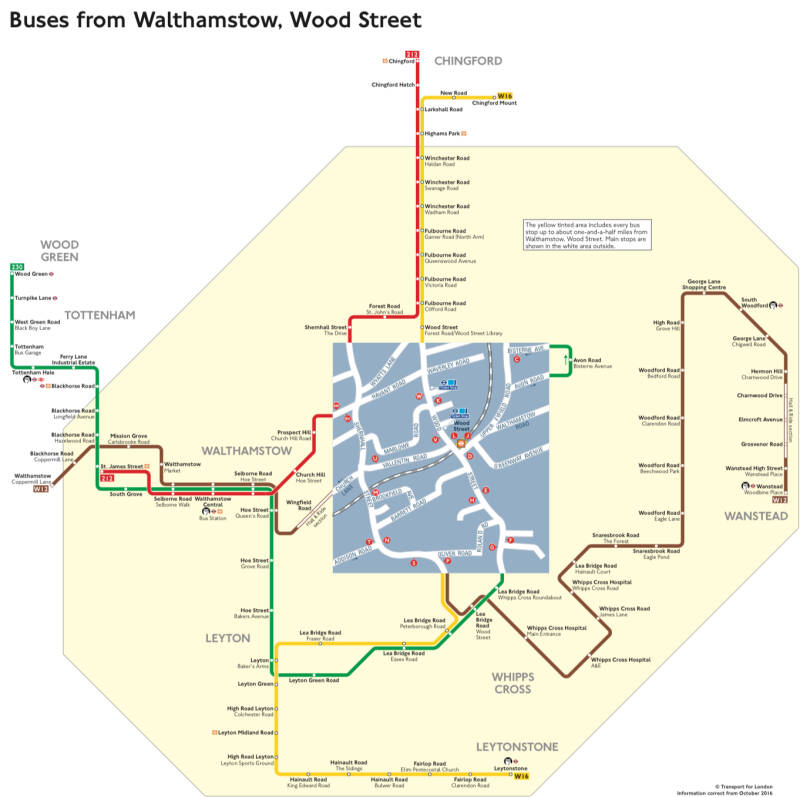

From WOOD STREET, along BUCK WALK and MORGAN AVENUE, OAKHURST CLOSE:
To FOREST SCHOOL CONSERVATION AREA (and to SOUTH WOODFORD or SNARESBROOK)
SITE OF OAKHURST
Home of REV. TULLIE CIRNTHWAITE, vicar of ST.PETER’S IN THE FOREST.

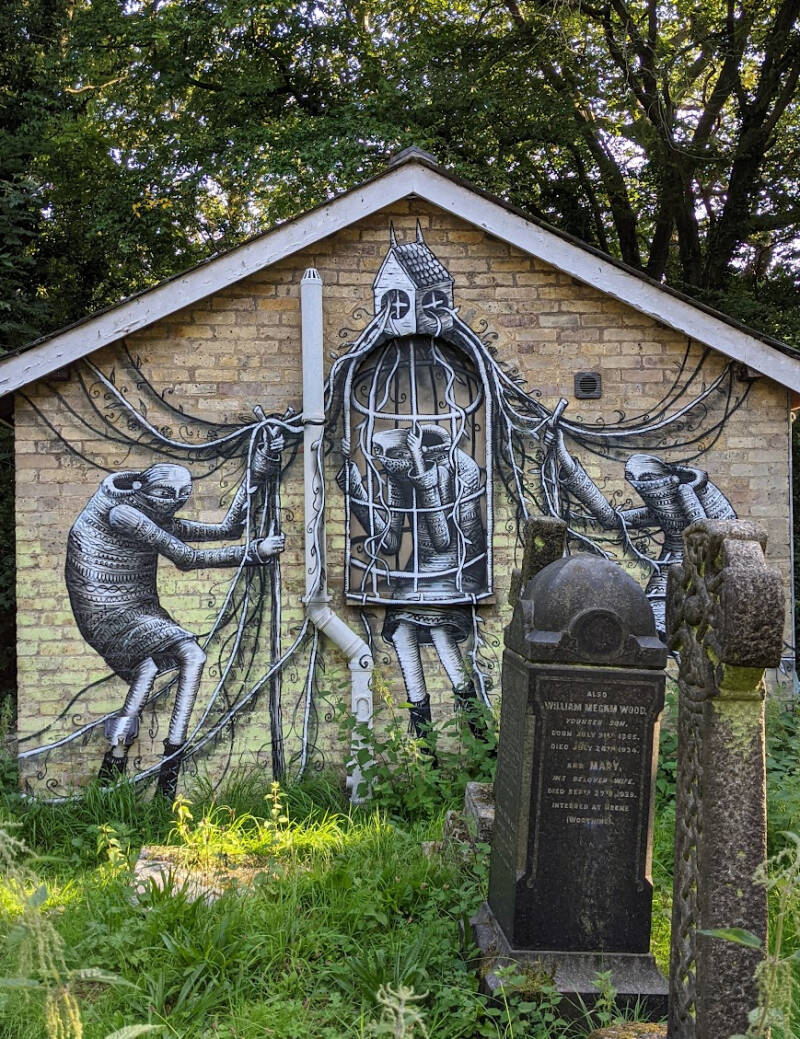
Schools for Gentlemen’ Sons
East of WALTHAMSTOW parish, on the high ground, at the FOREST edge, SIR JOHN SALTER (LM of London, 1740; chairman of E.I.C., 1743) erected 3 rows of houses in FOREST RISE and FOREST PLACE, intended for prosperous London merchants and their families.
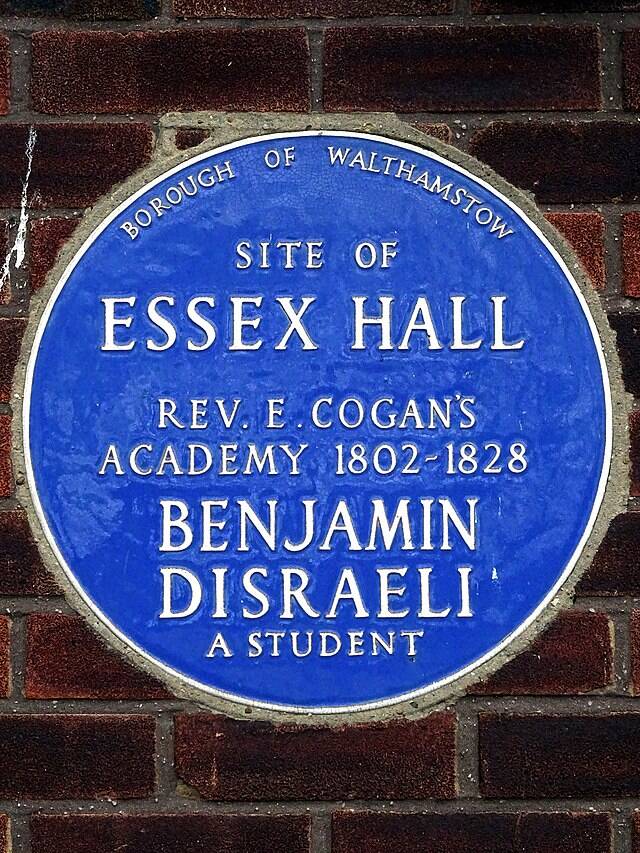
Those wealthy families, (in “one of the largest and handsomest suburban villages near the metropolis”) increased the need for good schools, especially for boys. In 1820 there were around 5 private school in WALTHAMSTOW, and less in LEYTON. The most famous one was probably REVEREND ELIEZAR COGAN’s “School for the Sons of Gentlemen “ at ESSEX HALL, BILLET RD., HIGHAM HILL, WALTHAMSTOW. Pupil DISRAELI was expelled for fighting.
By the 1880s the character and appearance of the district had undergone radical change, with the advent of the railways and the process of urbanisation. Terraces of Victorian yellow brick houses occupied the space of fields and commons. And the wealthiest classes moved out, their handsome, large villas and grounds being redeveloped.
BUXTON HOUSE, OAKHURST, MARRYATS LODGE all were lost.
The 1878 EPPING FOREST ACT, after a long struggle, helped prevent further enclosures of forest land, and preserve the sylvan quality of the area.

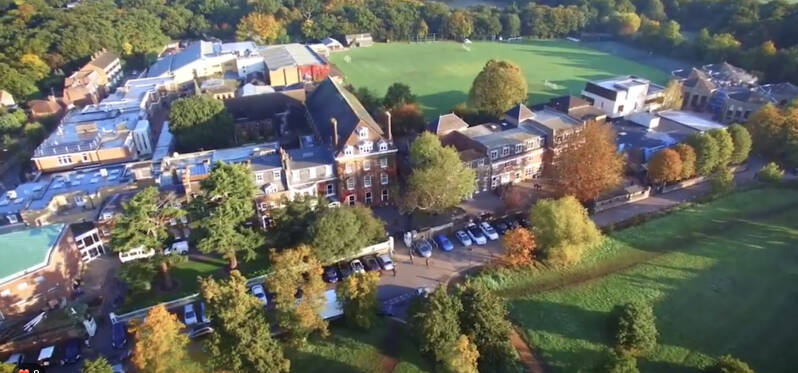
Here, in a his house in FOREST PLACE, in 1830, ARCHIBALD DU BOULAY established EXETER COLLEGE (had he West Country connections?). WILLIAM ORAM was its principal, and it only survived until 1833, but its flirtation with education is still remembered in the naming of COLLEGE PLACE.
Apparently undeterred, DU BOULAY and a group of local gentry, including WILLIAM MORRIS SENIOR, WILLIAM COPELAND (and SPODE, partner in POTTERY) and WILLIAM COTTON, established the FOREST PROPRIETARY GRAMMAR SCHOOL, in Oct.1834: which has proved a more permanent and worthy feature in the history of WALTHAMSTOW.
Under the first Head Master REV. THOMAS DRY the school, intended for the local gentry, was to feed KING’S COLLEGE, with which it was closely associated until 1910.
During the later part of the 19th c. under the REV. GILDERDALE, and notably REV. DR.FREDERICK BARLOW GUY, it expanded and transformed. From then on, it was called FOREST SCHOOL, and “In Pectore Rober” was adopted as a motto, cementing its place as one of London’s leading schools.
From 1936 HM MILLER transformed it into a modern 20th c.school.
After WW2, new blocks, swimming pool, arrival of girls. Only DIAMOND STRUCTURE
DU BOULAY: the Huguenots
WILLIAM MORRIS
REV.GUY lived for a time in the corner of ORFORD ROAD and HOE ST., opp.CLEVELANDS HOUSE. It was there that he tutored the young WILLIAM MORRIS formOXFORD (1851): and they remained friends thereafter. As a result of it, MORRIS designed a new banner which was presented in 1879, now displayed in a case at the S end of the DINING HALL.
CHAPEL
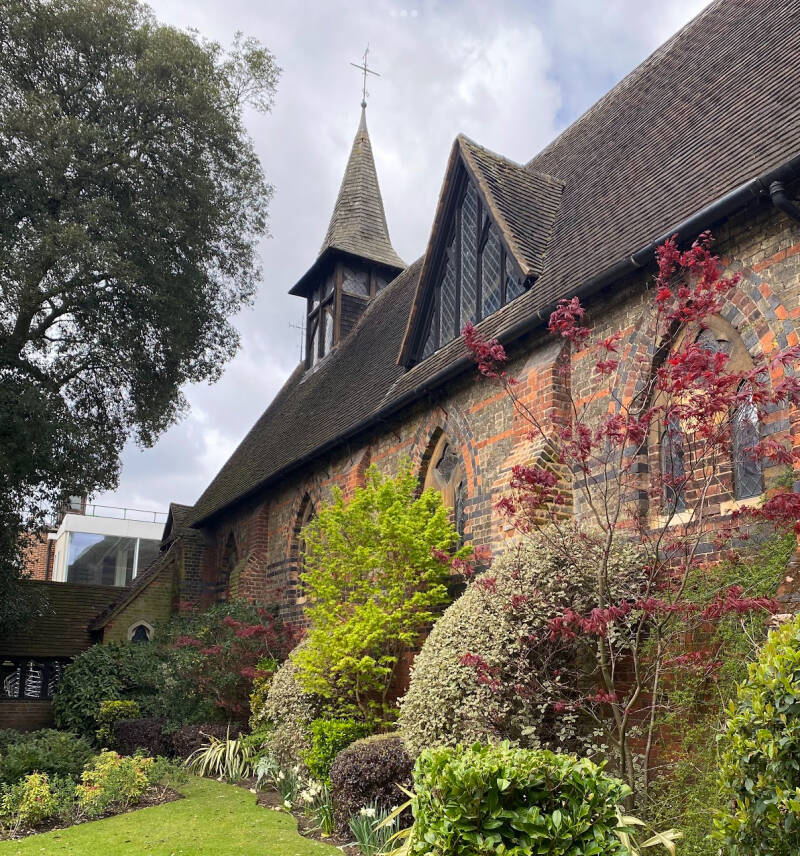
Erected in 1857 thanks to the money raised by GILDERDALE’s friend WILLIAM COTTON (of WALLWOOD). In an Early English Gothic, by WILLIAM WHITE, a relative and pupil of GILBERT SCOTT.
Extended in 1875. And thanks to contemporary architect G.E.STREET, the internal timber panelling came from JESUS COLLEGE, OXF.
Polychrom angels.
MEMORIAL DINING HALL
PRINCESS HELENA, daughter of QV, placed the foundation stone in 1886. A recent copy of the SCHOOL MAGAZINE (it was one of the first to be publish in the country) was deposited under it.
A length of the internal carved frieze comes from JESUS COL. Remainder of the panelling added over the years as funds became available.
Arch. RICHARD CREED FRIBA
MORRIS designed BANNER
MEMORIAL WINDOW, by EDWARD BURNE JONES (his wife married GUY) commemorates the MORRIS AND CO firm.
EDWARD BJ WINDOW. This two windows were destroyed during WW2 (only the REBECCA depiction fragment was saved).
Typical MORRIS WINDOW, depicting grapes and flowers, behind organ
Football in the COMMON
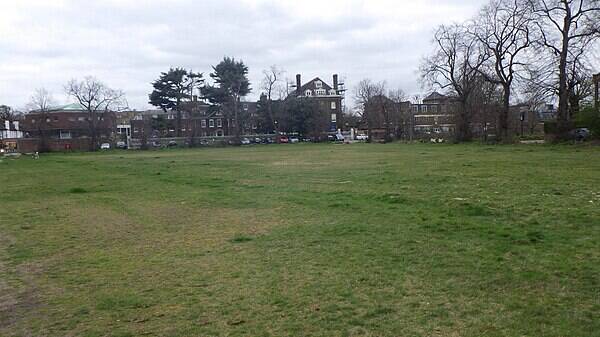
Forest had an important role in the development and creation of association football, and the common at the front of the school may well be regarded as a "cradle of the game". It used to play host to rudimentary games of football, cricket, athletics… in the early school days.
Now is protected for all to enjoy it, prvoiding an spacious and scenic setting.
Prestigious
Heart of oak or Strength in the Heart
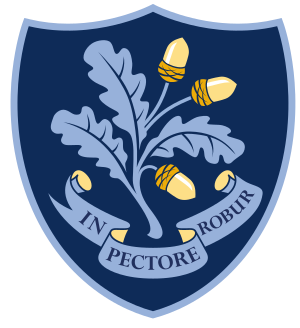
A private, fee paying school, independent of regulations or conditions that apply to state-funded ones (not following the national curriculum).
Not a PUBLIC SCHOOL though, the original 7 CLARENDON SCHOOLS, the older, more exclusive and expensive , plus additions, up to 24, subjected to the PUBLIC SCHOOLS ACT.
SITE OF BUXTON HOUSE, now BUXTON HOUSE FKATS and FOREST COURT
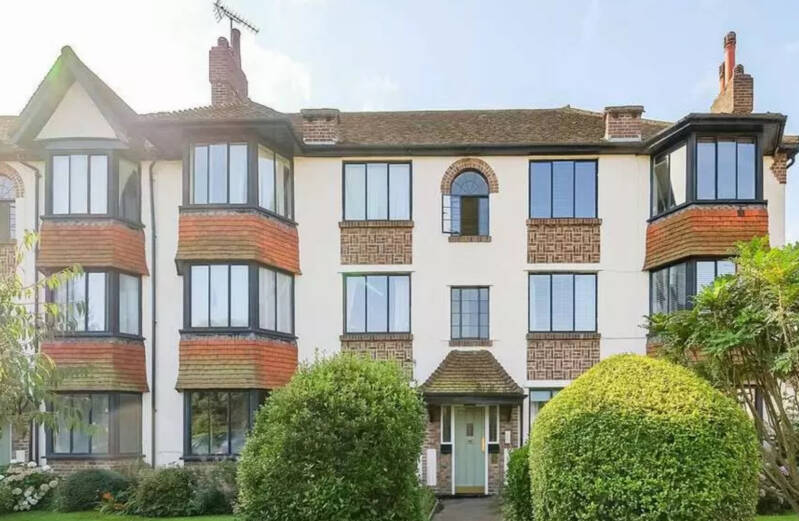
SIR (THOMAS)FOWELL BUXTON was a prominent member of the COMMONS PRESERVATION SOCIETY, instrumental in saving the FOREST, along with THOMAS WILLINGDALE and the CORPORATION
OXLEY HOUSE
GWYDR LODGE

EVESDEN
IVY COTTAGES
After FOREST SCHOOL, closest attractions:
SNARESBROOK COUNTY COURT SNARESBROOK & WANSTEAD SOUTH WOODFORD

After the hospital, along SHERNHALL STREET
THE LORD RAGLAN PH.
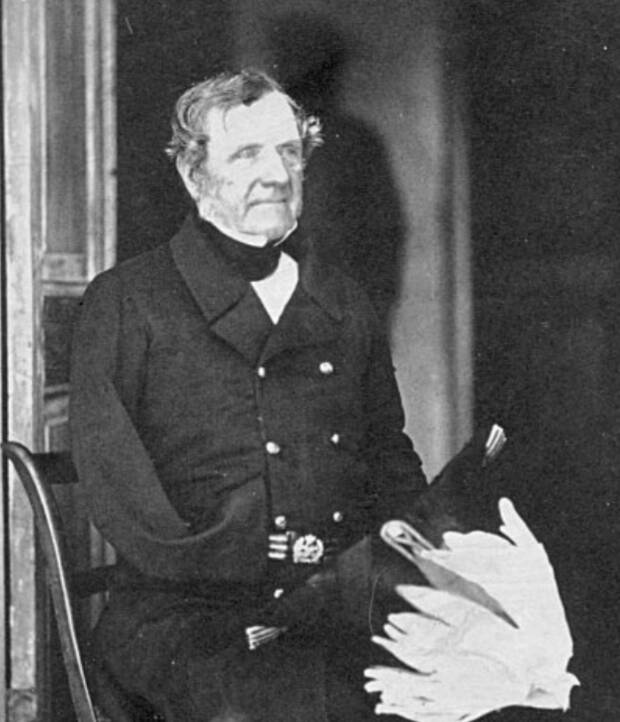
On the corner of Shernhall Street and Barclay Road.
Raglan fought in the Peninsular War and at Waterloo, where he lost an arm. Note the picture shows his right sleeve is empty. In 1854 he was given command of the British forces in the Crimean war. He was victorious at the Battle of Alma; but at Balaclava he gave the order which led to the foolhardy charge of the light brigade. It is arguable whether it was his order or Lord Cardigan's interpretation of it which was the cause of the disaster. Each of their Lordships have pub named after them in East London. The Crimean winters were so cold that three items of warm clothing were named after the two Lords and the battle - the raglan overcoat, the balaclava helmet and the cardigan.
RAGLANS, CARDIGANS AND BALACLAVAS: The Linguistic Legacy of the Crimean War



You are almost in WALTHAMSTOW village





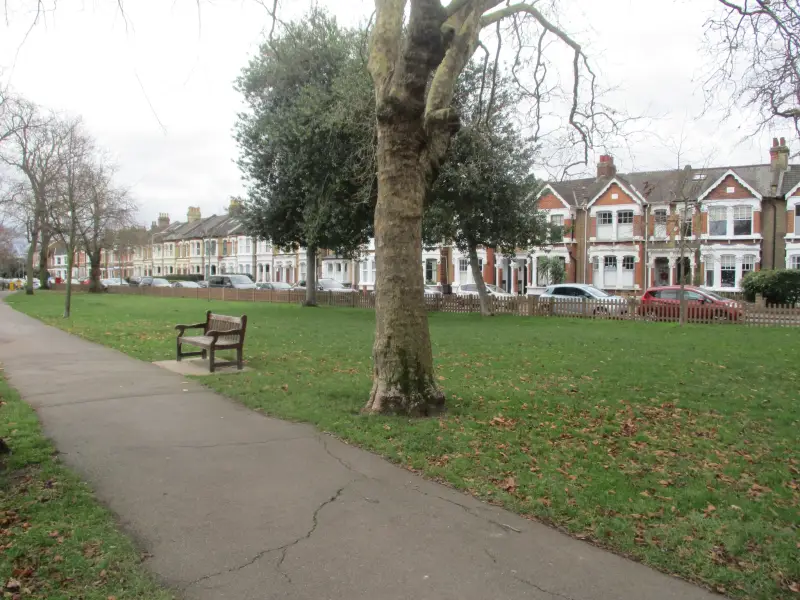
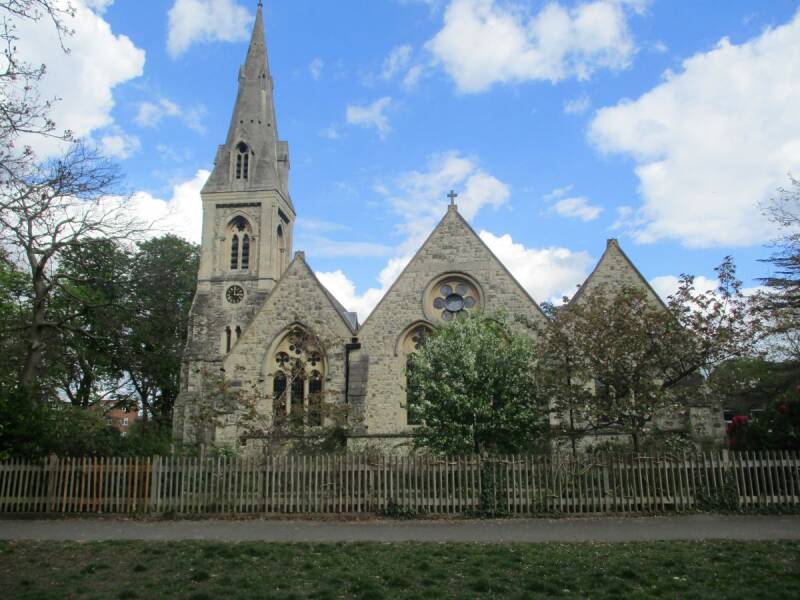
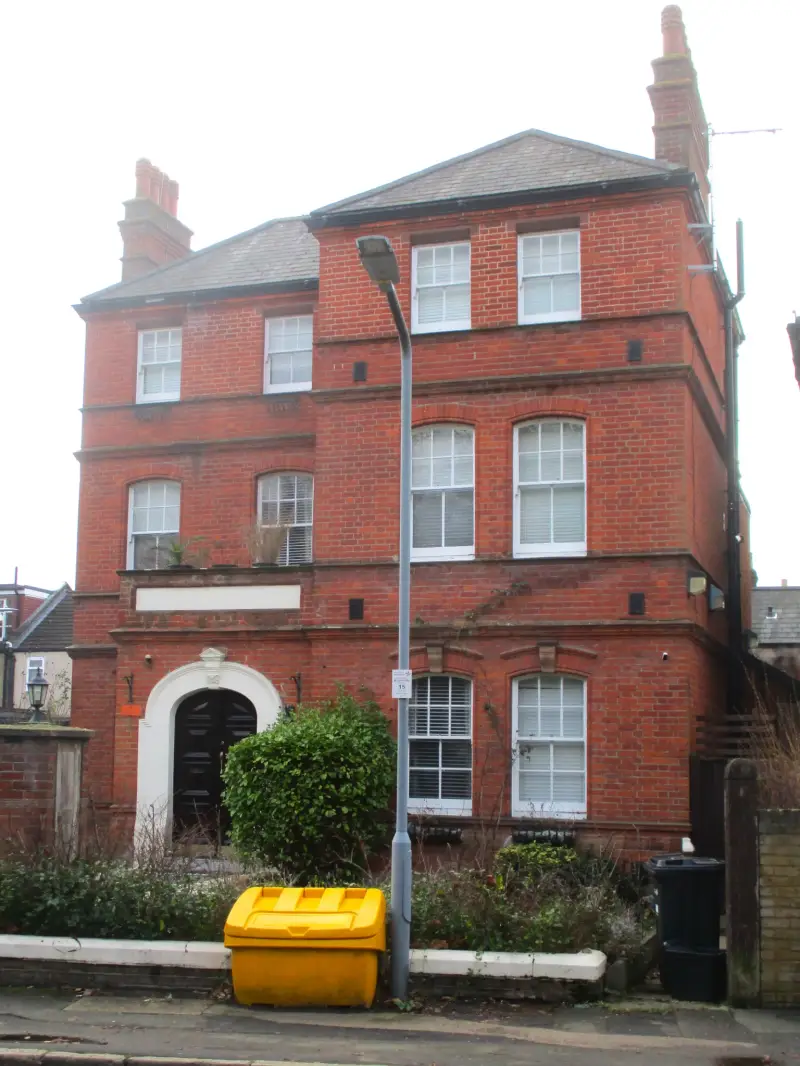
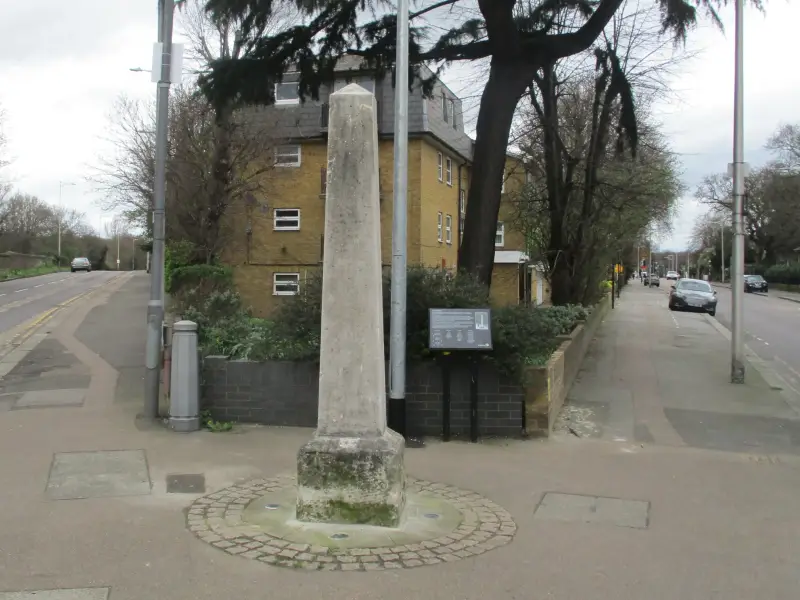



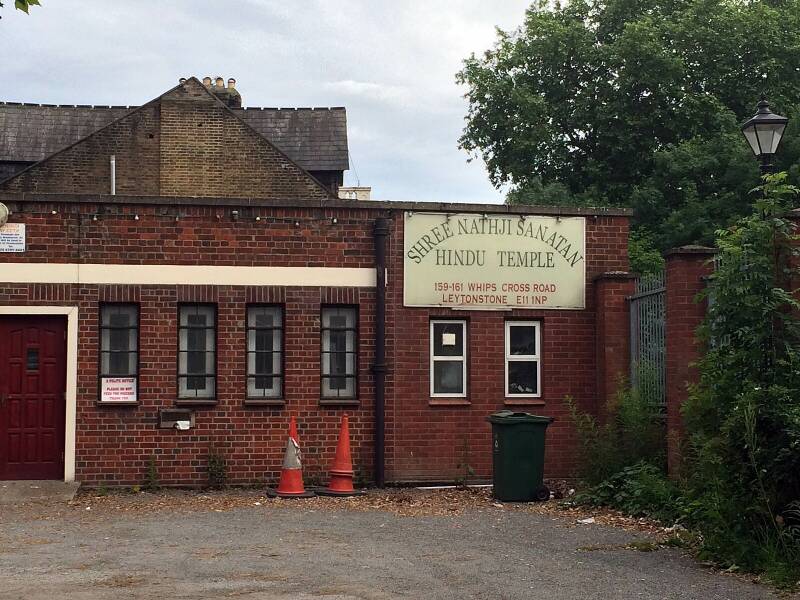




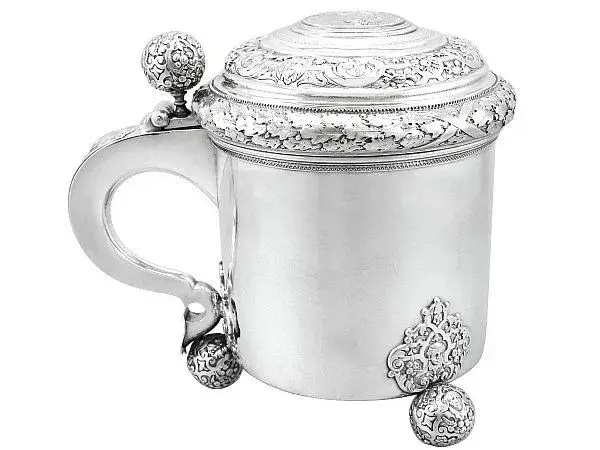

Create Your Own Website With Webador